
Sir Alan de Buxhull
Knight of the Garter
Constable of the Tower of London to his Grace King Richard II, King of England and France, Lord of Ireland and Overlord of Scotland
Recorded as: Sir Alan, Allan, Allen, Buxhull, Buxhill, Buxhall
Knight of the Shire, then Knight Bannerette, then Keeper & Captain of St Sauveur, Normandy, then Constable of the Tower of London for Edward III and Richard II, by the Grace of God, Kings of England, and France, Lords or Ireland, Overlords of Scotland
Son of Sir Alan and Maud Bokeshull (or Boxsille)
Born 1323, Salehurst, Sussex
Married: 1/ ? Bigwood date unknown, two daughters, Elizabeth & Amice
Married: 2/ Maud Fraunceys (or Francis),widow of John Aubrey of London, mother of Sir Alan Buxhall
Died 1381, Tower of London, County of Middlesex
Knight of the Garter #52, 1372
Sir Alan's father, Sir Alan Bokeshull, Knight of the Shire, was a supporter of Thomas, Earl of Lancaster. This allegiance caused a fall in family well being as Lancaster revolted against King Edward II and in 1322 suffered a crushing defeat at the Battle of Boroughbridge from a royal army under Sir Andrew de Harcla whilst awaiting support from the Scottish crown. Sir Alan was lucky not to be executed as many of the 95 captured Barons and Knights from the rebel army were. Sir Alan Snr. died in 1325.
Sir Alan Buxhall, when Constable of the Tower, was excommunicated in 1378 when he lead a body of armed men into Westminster Abbey to re-capture two escaped prisoners. In the struggle one of the prisoners and one of the Abbey's priests was killed. Sir Alan had to pay a large fine to get the excommunication lifted.
A short story on the above: Hunting the Wren
(NB: all three Sir Alans are actual historical figures and the sacrilege of the Westminster Abbey is a true event)
Servitors in Sir Alan’s livery Geffrey ðe Wulf Household Archer Gareth Robertson, Page Sword & Buckler practice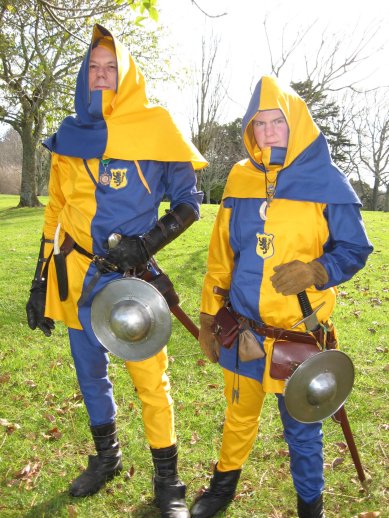
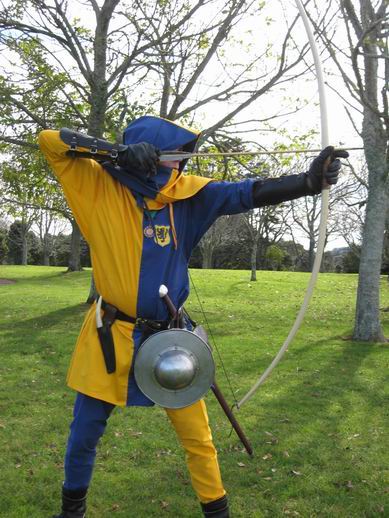
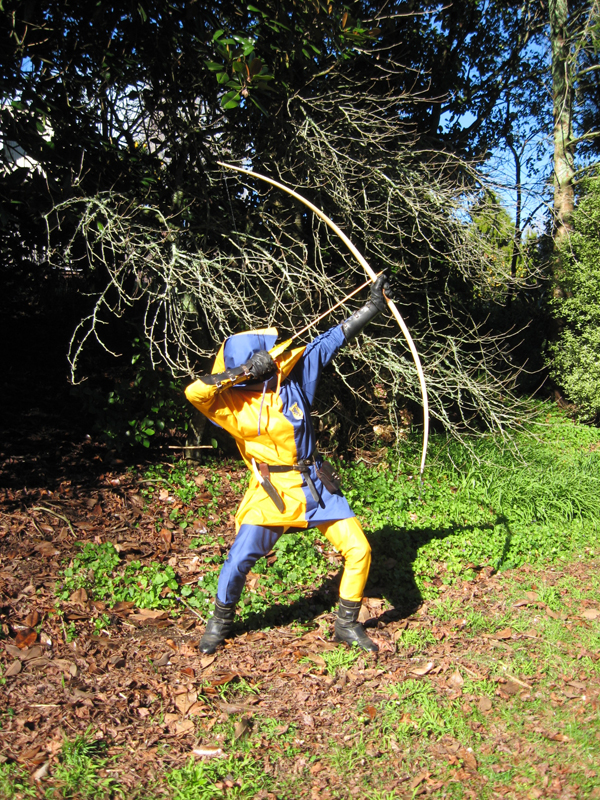
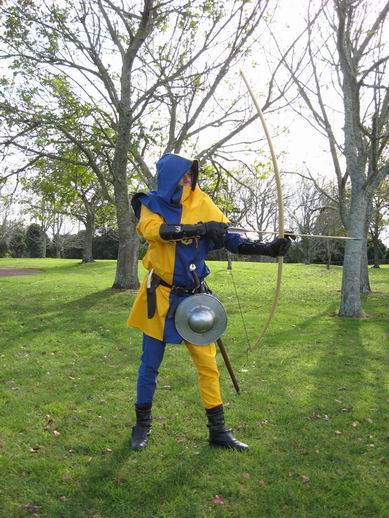
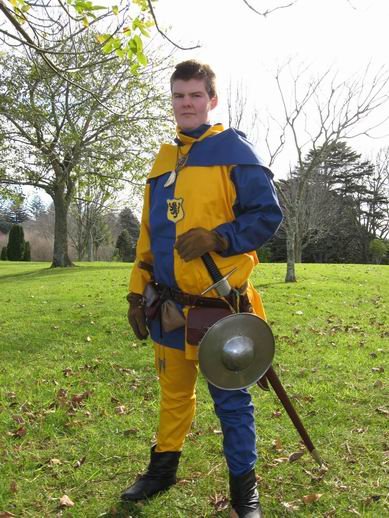
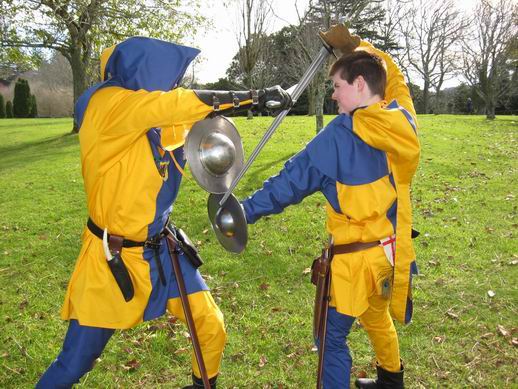
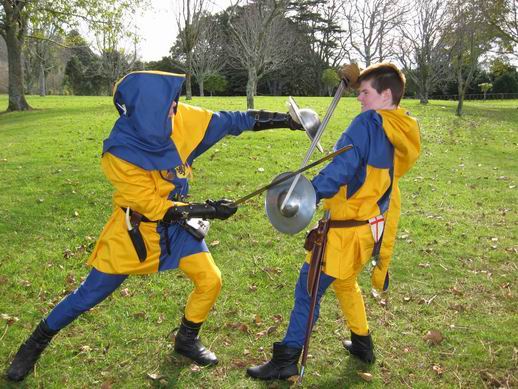
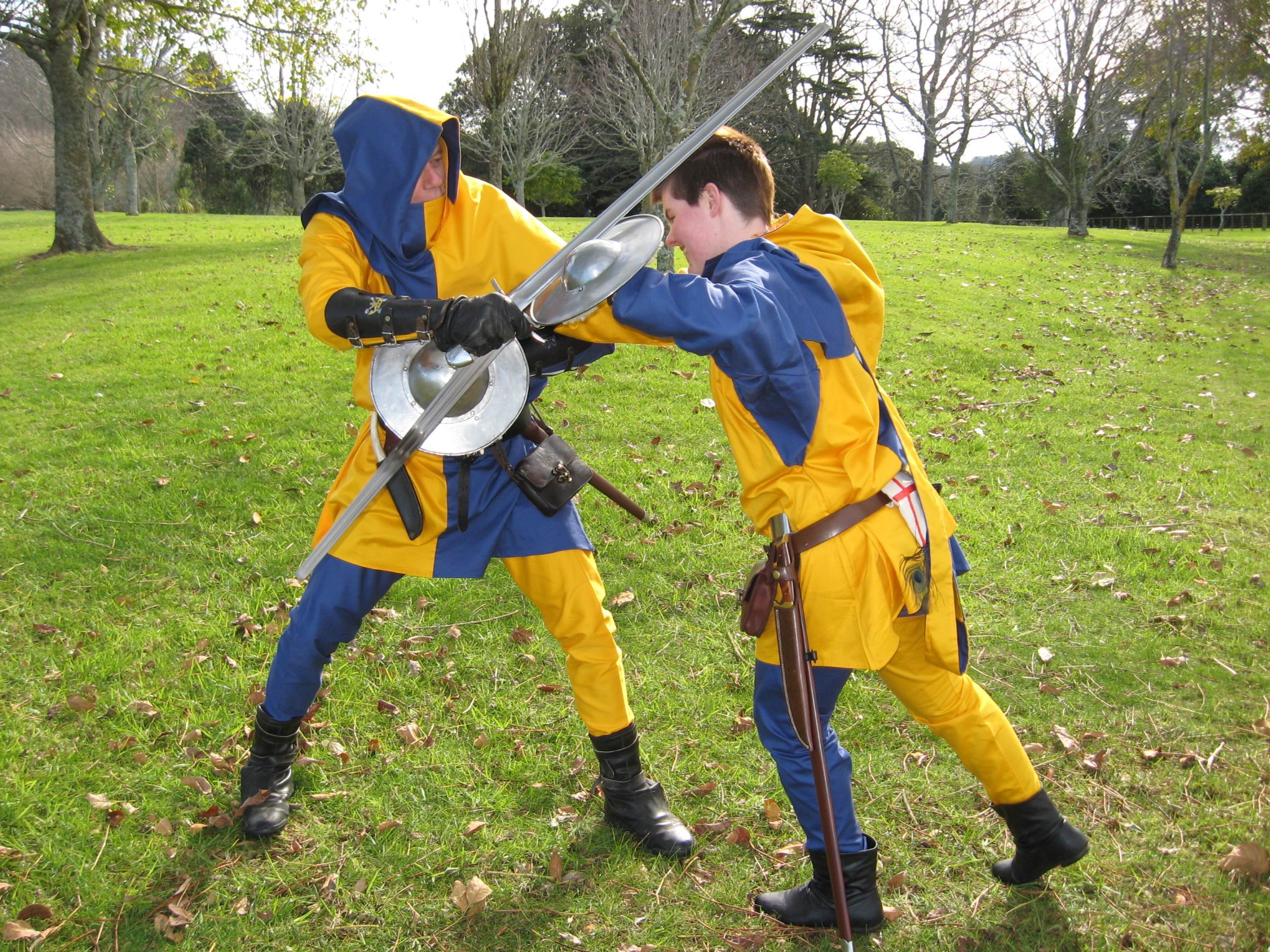

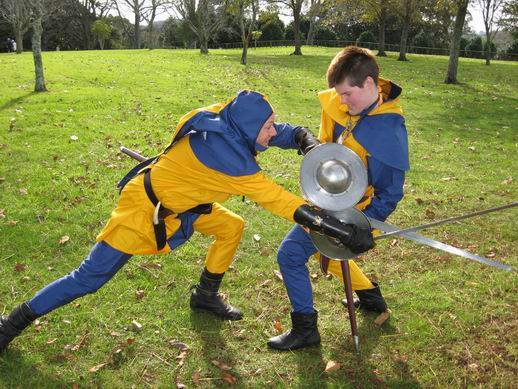
Geffrey ðe Wulf, Gareth Robertson and some of Sir Alan's retained archers
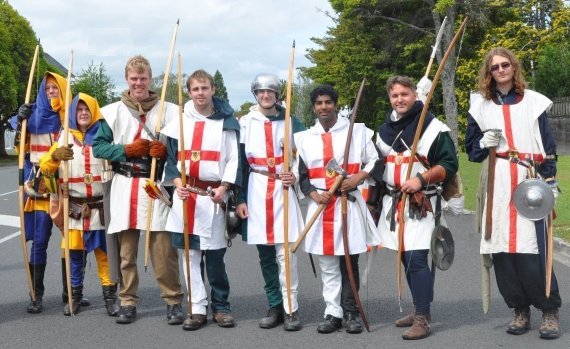
Peter atte Rickmansworth receives his Licence to be Sir Alan's Chaplin from Geffrey ðe Wulf.
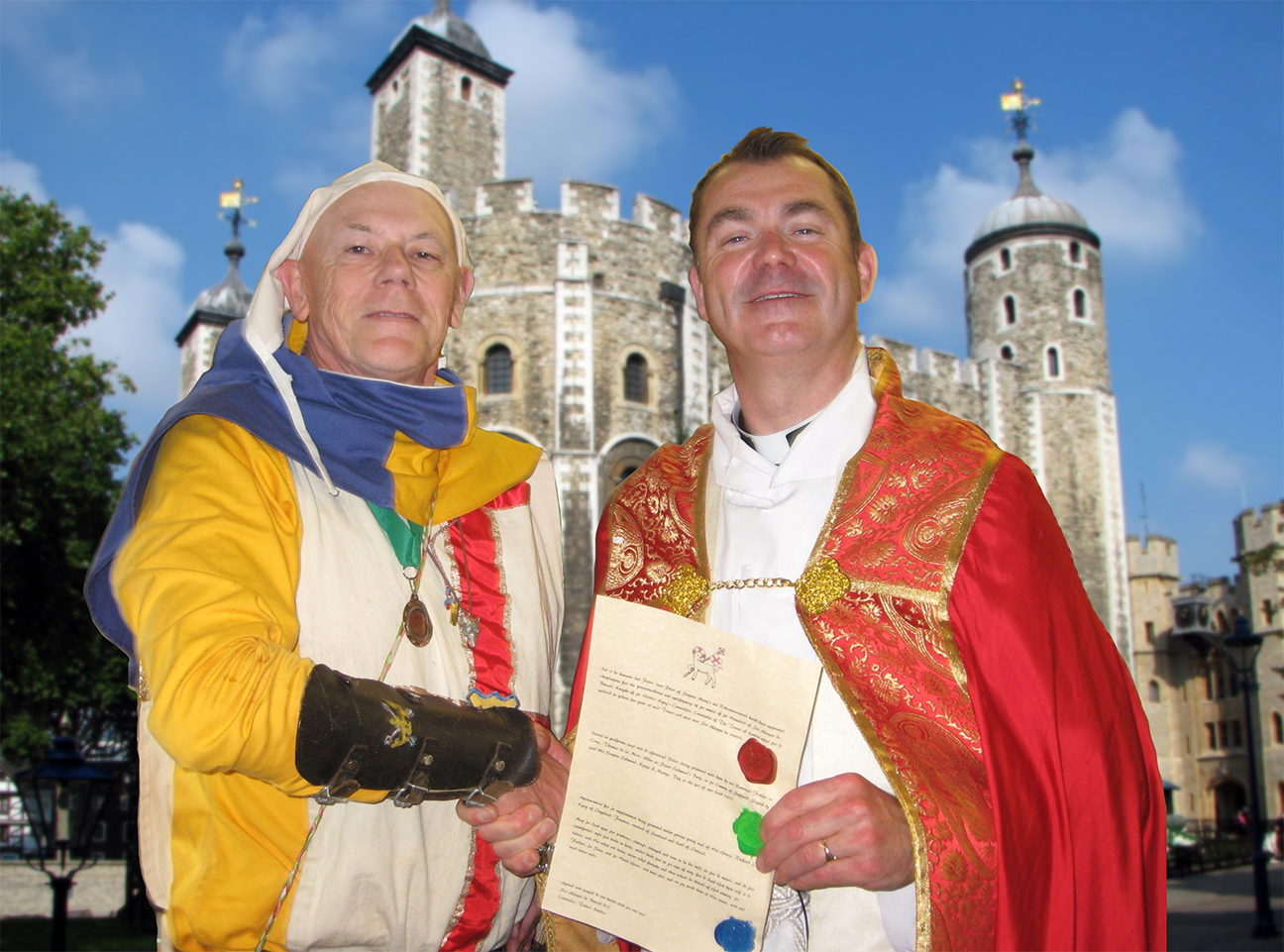
By other writers
Alan Buxhall , KG, Sir
BUXHULL, Sir ALAN (1323-1381), Constable of the Tower, was the son of Sir Alan Bokeshull, of Buxhull, the tenant in capite of a messuage now known as Bigzell, in the parish of Salehurst, Sussex, and of other lands in the same county, and who also held the manor and church of Bryanstone, in Dorsetshire, all of which were, upon his death in 1325, inherited by his son Alan, then an infant two years old. In 1355 he was a knight in the expedition of Edward III to succour the King of Navarre; and some years later, in 1363, he attended the King to welcome the King of Cyprus on his landing at Dover. The year following he was sent with the Lord Berghersh and Sir Richard Pembrugge to render similar honours to King John of France, when by reason of the inability of his subjects to ransom him he was obliged to return to captivity in England. In 1369 Sir Alan, then the King's Chamberlain, was sent with certain nobles to swear to the fulfilment of the treaty with Scotland, and in the same year he held a command under John of Gaunt at Tournehem. In 1370 he succeeded Sir John Chandos as captain and lieutenant of the king in the territory and fortress of St. Sauveur le Vicomte, near Valognes, in Normandy, where, as Froissart tells us, he bore himself as a right valiant knight, 'appert homme durement.' Soon afterwards he took part, with Sir Robert Knolles, in the expedition against the French near Le Mans. It was during his stay in Normandy that Sir Alan received a writ from the king addressed to his 'dear and faithful Aleyn de Buxhull,' commanding him to proceed into the district of Cotentin to redress the outrages alleged to have been committed by the king's subjects there against those of the King of Navarre. Upon the death of the Earl of Stafford, one of the founders of the order, in October 1372, Buxhull was created a Knight of the Garter, being the fifty-third person promoted to that distinction. He had been elected in 1365-6 successor to Sir Richard la Vache, K.G., in the office of Constable of the Tower of London for life, and was also made custos of the forest and park of Clarendon and other forests in Wiltshire. Towards the close of his life Sir Alan was a party to the murder, under peculiarly atrocious circumstances, of Robert Hauley and John Schakell, two esquires who had escaped, with violence from the Tower and taken sanctuary at Westminster. To effect their capture, Sir Ralph Ferrers and Buxhull were despatched with fifty men, and, meeting with some resistance, slew Hauley and a Sacrist within the very precincts of the abbey. This deed happened on 11 Aug. 1378. The power of John of Gaunt, however, effectually screened the perpetrators from punishment**. Buxhull did not long survive, for dying on 2 Nov. 1381, he was buried, according to Weever, in Jesus' Chapel, under old St. Paul's, near the shrine of St. Erckenwald. He was twice married. By his first wife, whose name is unknown, he left two daughters: Elizabeth, the wife of Roger Lynde, and Amicia, the widow of John Beverley. He took to his second wife Maud, the daughter of Adam Franceis, citizen of London, and relict of John Aubrey, who subsequently married John de Montacute, afterwards third earl of Salisbury and K.G. She gave birth to a posthumous son, who also received the name of Alan, and in due time the honour of knighthood.
[Beltz's Memorials of the Order of the Garter, pp. 188-92, and authorities cited; Lower's Worthies of Sussex, pp. 147-9; Weever's Ancient Funerall Monuments, p. 380; Hutchins's Dorsetshire, 3rd ed. i. 249, 251; Archæologia, xx. 152 n., where the writer asserts, but without giving any authority, that Buxhull was excommunicated for his share in the murder.] G. G.* [Ref: DNB, Editors, Leslie Stephen & Sidney Lee, MacMillan Co, London & Smith, Elder & Co., NY,1908, vol ii, pp. 556-7] For precise source refs, the article is entirely on p. 556, but part of the source refs are on p. 557 starting with "Funeral Monuments".
Author of this article: Gordon Goodwin
*Robert Hauley (Haule or Hawle) was a squire. He and fellow squire, John Shakel, took a hostage for the payment of the ransom of the Count of Denia, a great Aragonese nobleman whom Hauley had captured at the battle of Najera in 1367. In 1377 Hauley and Shakel were thrown into the Tower of London for refusing an order to hand over the hostage, who was in fact the Count's elder son Alphonso. The Count has been adjudged by Edward the Black Prince to be the prisoner of Hauley, and his ransom was fixed at a vast sum of money, in which London merchants had become financially interested. Also, since the Count was of the Blood Royal of Aragon, his son's captivity in England was a political and diplomatic embarrassment. In 1378 Hauley and Shakel, using violence, escaped from the Tower and took sanctuary at Westminster. A royal letter to Abbot Litlyngton having failed to secure their surrender, the Constable of the Tower, Sir Alan de Buxhall, and Sir Ralph de Ferrers, broke into the Abbey sanctuary with fifty soldiers on 11 August and captured Shakel. This breaking of sanctuary was in itself sacrilege, but worse was done when Hauley, having shown fight, was killed, together with a sacrist named Richard, in the Quire during High Mass. The malefactors and their confederates were excommunicated, excepting only the boy king, Richard II, his mother and the Regent, his uncle John of Gaunt. Gaunt was widely suspected of having been implicated because of his claim to be King of Castile and his interest in Spanish politics. Hauley was buried in the south transept. Four months after its desecration the Abbey was reconsecrated. Buxhall had his excommunication lifted on payment of a substantial fine.
**The outrage seems to have aroused Sudbury,Archbishop of Canterbury, to bold and resolute action. He excommunicated the Constable of the Tower and all his aiders and abettors in the deed, adding a special clause to except King Richard II, his mother and the Duke of Lancaster, the Regent, a suggestive implication that tended rather to incriminate than to clear them. The government stood by their officers as firmly as the Primate by his clergy. The King ordered the reading of the excommunication to be stopped, and the church to be reconsecrated. The Abbot of Westminster, however, backed by the Bishops, refused to allow the place to be hallowed, and the monks' services ceased for a while. The King ordered the Abbot to appear before him, but he refused to come. Neither was Bishop Courtenay a man to remain in the background in such an emergency. Every holy day, in spite of the royal orders, he read the excommunication afresh at St. Paul's Cross, and did his best to stir up feeling against the Duke in London. The open quarrel between Church and State continued till the Parliament met in October held at Glouchester when, at the Regents' behest, Sir Simon Burley and Sir Thomas Percy charged Nicholas Litlington, the Abbot of Westminster Abbey, with obstructing the king's justice by harbouring a traitor and debtor who had no right to sanctuary in the first place. Lancaster used the arch Lollard John Wycliffe to make the legal case against the Abbot.
Speaking for his patron and his party, Wycliffe declared that he would not attempt to defend the abominable slaughter of Haule, although he pointed out that the knight himself had been the first to draw sword in the church. What he undertook to defend, was the action of the officers in entering the precincts to make the arrest. The Abbot was censured and fined. There is no record of how much the fines was, but one suspects it may have equalled that paid by Sir Alan.